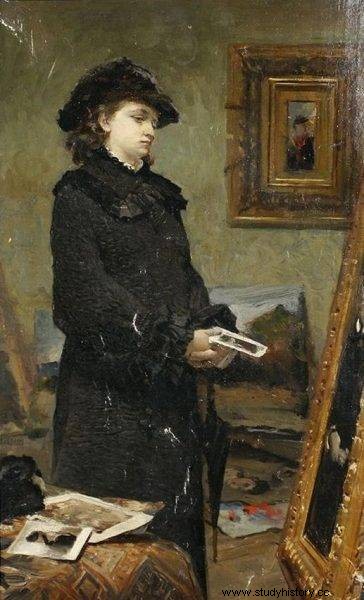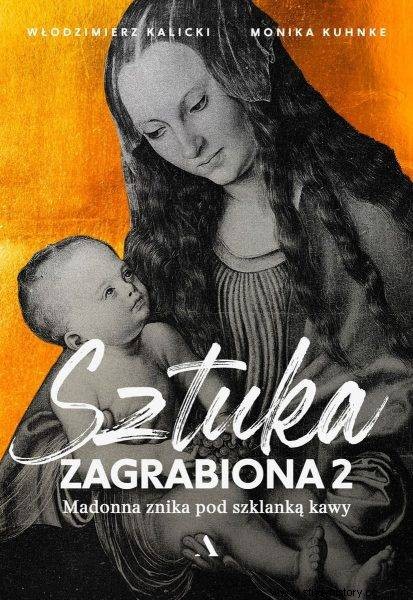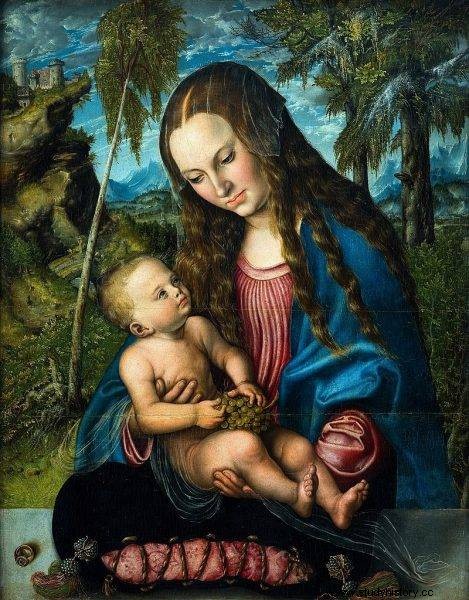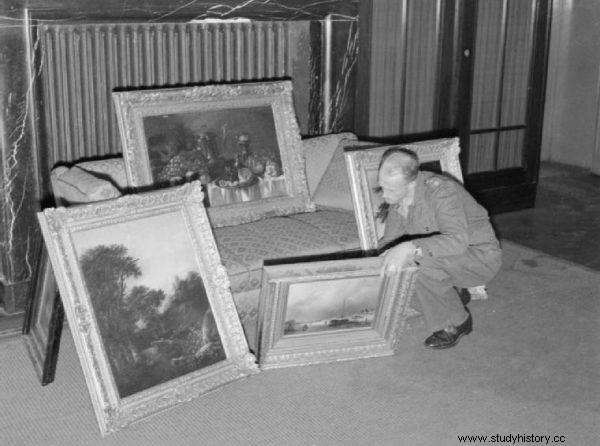It is difficult to assess Polish losses of cultural property during World War II. It is estimated that over half a million works of art have been stolen, hidden or destroyed.
The plunder of Polish cultural goods began shortly after the September campaign in 1939. The robbery was carefully planned and organized by the German occupier, but the Russians also took away our native works of art. In the same year, Polish researchers began registering claims, compiling collective lists showing the losses incurred. Attempts were made to complete the documentation throughout the occupation, but it could not be as precise as we would like, if only because of the lack of inventory books, which the invaders also deliberately destroyed.
In the turmoil of war, not only museum exhibits were lost, but also valuable souvenirs from private collections, passed down from generation to generation. Their fate was often unknown for decades, and then found them suddenly under amazing circumstances and this is in old attics, and this is at auctions at auction houses. We have definitely lost many works of art but not all is lost yet. History teaches that you have to keep your eyes and ears open, because missing exhibits can be hidden literally anywhere.
Image after only a short description
The melancholic and enchanting painting by Leon Wyczółkowski "In the painter's studio" from 1883 was on the list of works stolen from the National Museum in Warsaw during World War II. No photographic documentation has survived, only a short description:"A young woman in mourning in a painter's studio, holding a photograph in her hand and looking at a portrait of a young man". The dimensions of the canvas were also known:60.5 x 31 cm; in a frame 101 x 72.8 cm.
It was not possible to recover it as part of the recovery action carried out in 1945–1949. There was no information about the painting. Faded like a stone into water. It only surfaced several decades later. In the book "Sztuka zagrabiona 2. Madonna disappears under a glass of coffee" by Włodzimierz Kalicki and Monika Kuhnke we read:
Art historian Anna Tyczyńska from the National Museum in Warsaw, co-author of the catalog of war losses of Polish painting published in 1998, in May 2009 browsed the offers of auction houses from all over the world.

The painting by Leon Wyczółkowski "In the painter's studio" from 1883 was on the list of works stolen from the National Museum in Warsaw
On the website of Peter Karbstein - Kunst- und Auktionshaus in Düsseldorf, she saw a young woman in a black coat and black hat, with an umbrella hanging over her left shoulder. The woman is holding a small photo and is looking at the portrait of a man on the easel. Anna Tyczyńska checked the dimensions of the painting:60.5 x 31 centimeters. They were correct! For the first time, Mrs. Tyczyńska saw the painting by Leon Wyczółkowski "In the painter's studio", which she knew only from the description in the pre-war documentation of the National Museum in Warsaw.
Wyczółkowski returns to the museum
The National Museum immediately sent an application to withdraw the work from auction. However, due to the lack of photographic documentation, the German auction house - although it accepted our institution's request - did not withdraw the painting from the auction. "In the painter's studio" by Leon Wyczółkowski was sold to a Berlin art dealer for 18,000 euros. Less than two years later, the buyer put the canvas up for sale.

The text was created, among others based on the book by Włodzimierz Kalicki and Monika Kuhnke, Sztuka zagrabiona. Volume 2. Madonna disappears under a glass of coffee ”, which has just been released by Agora publishing house.
The Polish auction house Desa Unicum learned about the re-bidding. Desa's president, Juliusz Windorbski, was looking for a willing buyer in Poland for a long time, but no one was interested in saving the Polish work . When Windorbski was about to give up, he met a friend of his auction house client, Witold Konieczny from the Wiedza i Praktyka publishing house. It was Konieczny, without a second thought, that his company would buy the painting by Wyczółkowski. The authors of the book "Sztuka zagrabiona 2. Madonna disappears under a glass of coffee" mention that:
Witold Konieczny and Roman Kruszewski, chairman of the supervisory board (also co-owner of the publishing house Wiedza i Praktyka and a serious collector of paintings), the decision to invest company money on Wyczółkowski's painting made during one interview . Two days later, the German art dealer knew that he could expect guests from Poland at any moment.
The German art dealer demanded 50,000 euros for the painting. Konieczny and Kruszewski did not even think for a moment about keeping Wyczółkowski's work to themselves. Immediately after redeeming the painting "In the painter's studio", they handed it over to the National Museum in Warsaw, where it is still exhibited today - in the Gallery of Polish Painting.
Where is Madonna?
In the early 1960s, in the conservation workshop of the Silesian Museum in Wrocław - today it is the National Museum - a priest, the curator of the Wrocław Archdiocese Museum, appeared in secret - Włodzimierz Kalicki and Monika Kuhnke tell in the book "Sztuka zagrabiona 2. Madonna disappears under a glass of coffee". - He was carrying quite a large, flat package under his arm. When he found himself alone with the museum conservator Daniela Stankiewicz, showing his excitement, he unpacked the package: - This is Cranach, our treasure.
The problem is that was not a painting painted by the famous Cranach, but a modern fake . Daniela Stankiewicz quickly noticed that "Madonna under the Fir Tree" certainly does not come from the 16th century. Careful examinations and comparisons with photographic documentation only confirmed the conservator's belief. When she published the results of her research in the "Art History Bulletin", a storm broke out in the world of Polish art. The question of where the original of "Madonna under the Firs" was and how the forgery happened in general kept researchers awake at night.

Lucas Cranach the Elder painted "Madonna under the Fir Trees" around 1510.
Lucas Cranach the Elder painted "Madonna under the Fir Trees" around 1510 for the Wrocław cathedral. The painting hung there until the 19th century, later - due to its value - it was placed in the cathedral treasury. It survived the First World War unscathed. During World War II, in 1943, the Germans, fearing that the work might be destroyed during an Allied bombing, took it outside the city .
Later it turned out that the linden plank with the painted "Madonna under the Fir Trees" was cracked and required maintenance. The repair was commissioned by an employee of the Archdiocese Museum, Father Siegfried Zimmer. In 1947, Zimmer, due to the resettlement of German residents, had to leave Wrocław. He took "Madonna under the Fir Tree" with him and left a poor copy in its place, which he painted with his painter friend, George Kupke.
Madonna under… coffee
Zimmer, expecting the luggage to be checked by Polish soldiers, properly prepared for the journey - he wrapped Cranach's work in an oilcloth and placed a thermos with coffee on it. Nobody has guessed that the makeshift table is in fact a precious painting.
Probably "Madonna under the firs" hit the market in the late 1960s, when the discovery of Daniela Stankiewicz was already known in the community. Museums in Berlin, Dresden and Munich refused to buy the painting , so it was circulated among private collectors not only in Germany but also in Switzerland. From time to time, information about its auction on the international antiquities market appeared, but the breakthrough did not come until 2012. In the book "Sztuka zagrabiona 2. Madonna disappears under a glass of coffee" we read:
Unexpectedly, in February 2012, the Archbishop of Wrocław, Marian Gołębiewski, received a letter from the Swiss lawyer Raphael Kühny, representing the Swiss Catholic diocese of St. Gallen, with a request to submit documents proving the ownership of the image.

The above stories inspire optimism and give hope that somewhere, in the corners of the world, there are still Polish works of art that are just waiting to be discovered
It turned out that a Swiss collector donated "Madonna under the Fir Trees" to a Swiss church. The Swiss bishops planned to sell the work and use the profits for charity. Ultimately, however, they decided to return them to the Archdiocese of Wrocław. Soon after, after many years of wandering, one of the most valuable paintings by Lucas Cranach the Elder returned to the Archdiocese Museum in Wrocław.
The above stories inspire optimism and give hope that somewhere, in the corners of the world, there are still Polish works of art that are just waiting to be discovered and returned to their place, even after many, many years.
Bibliography:
- Kalicki W., Kuhnke M., Plundered Art 2. Madonna disappears under a glass of coffee , Warsaw 2021.
- Kudelski J.R., Secrets of the Nazi plunder of Polish art collections , Warsaw 2004.
- Matelski D., Plunder and restitution of Polish cultural goods from modern times to the present , Krakow 2006.
- Cranach in fashion , ed. E. Houszka, M. Pierzchała, Wrocław 2017.
- Wrzesiński Sz., Urban K., Treasures of the Third Reich hidden in Lower Silesia. Accounts, documents, memories , Warsaw 2013.
